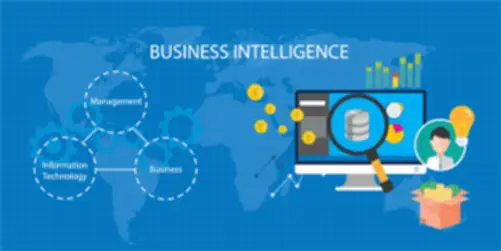Right Now, firms use containerization increasingly to not only construct new apps but additionally modernize present ones for the cloud. Suppliers of containerization provide other ways to make sure safety, however one factor is constant across the board. If considered one of your containers will get hacked, purposes working on other containers aren’t vulnerable. When choosing the proper container technology, consider your project requirements, target working system, application, and desired level of isolation and effectivity.

Containerization is a expertise that allows builders to bundle applications and their dependencies into isolated environments. This information explores the advantages of containerization, together with portability, scalability, and resource effectivity. There are numerous advantages to containerization, including portability, efficiency, scalability, consistency, and isolation. They make containers ideal for microservices architectures, DevOps practices, CI/CD pipelines, cloud-native purposes, and application modernization. One of the greatest challenges in software growth is making certain that an app works similarly in quite a lot of environments.
Google Kubernetes has its personal container engine, rkt, but additionally it is a community the place customers can run different in style engines. It’s an open source host environment for creating libraries of applications to share or develop. When it comes to navigating the complexities of containerized deployments, Wiz is a pivotal ally. With our unified cloud safety platform, we offer prevention, detection, and response capabilities that empower you to construct and run safe, environment friendly applications within the cloud.
How Are Containers Different From Digital Machines?
Today, Containerization has turn out to be a key know-how for modern software development, notably in cloud computing and microservices structure. As A Substitute, containers run “on top” of a container runtime platform that abstracts the assets. As A Outcome Of containers simply include the fundamental parts and dependencies of an app without extra bloat, they are sooner and extra light-weight than options like virtual machines or bare metal servers. They also make it attainable to summary away the problems associated to working the identical app in different environments. If you can present the underlying container engine, you’ll be able to run the containerized software ai networking.
- Docker containerization packages an utility and its dependencies right into a self-contained unit called a container.
- They support seamless deployment across various cloud platforms, improving flexibility and resilience.
- By abstracting the appliance and its dependencies from the host OS, containers can transfer seamlessly throughout platforms and clouds, guaranteeing constant efficiency wherever they go.
- Containers and microservices work with cloud infrastructure, the DevOps strategy to software improvement, and a steady software supply mannequin.
- The cloud vendor does not cost for computing sources when the serverless software is idle.
- Server consolidation is a kind of containerization the place a number of server cases are run on a single server.
Isolation And Security
Migrating legacy purposes to new platforms may be overwhelming, however containerization makes it manageable. By decoupling functions from their original environments, containers turn them into moveable, self-contained items. This permits you to move even monolithic legacy systems to trendy infrastructures without compromising performance or reliability. Microservices break down advanced applications into smaller, independently deployable components. Containers are a pure fit for this structure, offering a lightweight, modular method to https://www.globalcloudteam.com/ manage these items.
Containerization allows developers to deploy and replace applications throughout IoT gadgets easily. The Kubernetes ecosystem is broad and complex and no single know-how vendor presents all the parts of an entire on-prem trendy purposes stack. Containers and microservices are similar and related constructs which might be used collectively, but they differ in several key ways. A microservice, the trendy realization of the service-oriented architecture (SOA) paradigm, combines all the functions wanted for an software in a discrete unit of software program.
There are other container administration methods out there available in the market such as Kubernetes, which is an open-source container administration system. In contrast, Containers don’t want an entire working system on a regular basis. As it isn’t describe the benefits of containerisation going to have the whole operating system and its binaries, the containers are so lightweight when compared to VMs. It proportionally attributes to the time taken by the container to come back up.
Nevertheless, with containerization and adoption of Docker, Azure, and edge computing, Lindsay migrated its servers and applications to the cloud setting. Docker enabled the corporation to attach over 450,000 IoT-enabled irrigation systems worldwide and save more than 700 billion gallons of water. The purpose cloud services corporations exist is just because managing servers is costly from a management perspective and costly as an gear perspective. While they handle most of the cloud issues, it is nonetheless up to you to make your containers and deploy them onto their service.

Docker Engine: The Soul Of Containerization
Fast-track your method to production-ready Kubernetes and simplify lifecycle management. It doesn’t matter who’s handling it, giving the customer extra power to select from completely different suppliers. Containers will set up all of the prerequisite recordsdata in order to run the software at hand. In Master Web, we suggest superior cluster building to clients that require excessive availability and performance for their project.
Together, they permit corporations to build and deploy purposes in innovative and e cient new ways. Container orchestration entails a set of automated processes by which containers are deployed, networked, scaled, and managed. The major container orchestration platform used today is Kubernetes, which is an open-source platform that serves as the basis for lots of of today’s enterprise container orchestration platforms. Clearly containerization is the method ahead for app growth as containerized environments are dynamic and portable, permitting them to adapt extra shortly and supply extra agility than virtual machines. It’s definitely value exploring if you need to make your software program much more portable, scalable and safe. By packaging their code into containers, they’ll simply deploy their functions on IoT devices with limited resources.
For the app to work, it has to orchestrate these containers and their respective microservices. This container goals to offer isolated utility environments much like digital machines but with the benefit of running on a shared working system kernel. Nevertheless, it wasn’t until the emergence of Docker in 2013 that Containerization became mainstream. Docker made it easy for developers to package and deploy applications in containers and rapidly gained reputation inside the software program improvement neighborhood. Containers are designed to be transportable and can be deployed throughout totally different operating methods and cloud platforms, offering a consistent runtime surroundings. They also isolate the application from the underlying infrastructure, enabling larger security, flexibility, and scalability.
Additionally, containers make deploying, scaling, and managing applications easier, leading to improved operational agility. Namespaces can restrict access to any of those sources through processes inside each container. Typically, subsystems that wouldn’t have Namespace assist usually are not accessible from within a container. Directors can simply create and manage these “isolation constraints” on each containerized application through a easy user interface. Containerized applications are “isolated,” that means they do not bundle in a duplicate of the working system. Serverless computing refers to a cloud computing technology the place the cloud vendor absolutely manages the server infrastructure powering an utility.
Additionally, if you’re liable for securing multi-cloud environments, you’re welcome to learn our free Reaching Cloud With Confidence within the Age of Superior Threats whitepaper. In that paper, you’ll achieve strong insights into risk prevention and infrastructure visibility in multi-cloud environments. Containerization works by virtualizing all the required items of a particular software into a single unit. Improve your infrastructure’s availability, scalability and safety by exploring IBM’s load balancing offerings.
Leave a Reply